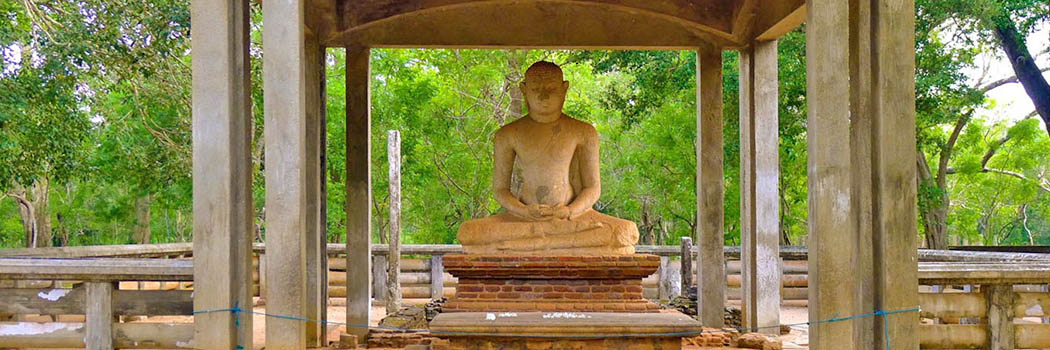
Nichiren Daishonin, the great Bodhisattva of the earth, (who is known as "Vishista Charithra" is a great disciple of Buddha from the remote past) He was a Buddhist priest born in Japan, about 755 years ago and lived during the Kamakura period (1185–1333).
Nichiren is known for his sole devotion to the Lotus Sutra, asserting that it was Shakyamuni Buddha's ultimate teaching and was the best method to attain enlightenment. Nichiren believed that the Lotus Sutra contained the essence of all of Shakyamuni Buddha's teachings related to the laws of causality, karma. His interpretation of the Lotus Sutra centers on the emphasis of its 16th chapter, The Life Span of the Thus Come One, where he grounds his revelation that the chanting of Nam Myoho Renge Kyo is the superior practice of today's age (Mappō).
Nichiren Daishonin became a monk at the age of 12 years and studied all the existing Sutras and he came to the conclusion that the Lotus Sutra is the king of the Sutras. He tried his best to establish this practice in Japan. He was ridiculed many times by the provisional Mahayana priest and the rulers, because he predicted the disasters that were going to happen in Japan and insisted that they should establish the "Ekayana"(Lotus Sutra) practice in the country in order to overcome these disasters.
After Hearing this, Daishonin was prosecuted by the ruler of Japan (Because at that time the priests of provisional Mahayana sectors were the advisors to the rulers in Japan) and was taken to Tatsunakuchi beach to be beheaded. But he escaped this miraculously and he realized that he was the votary of the Lotus Sutra predicted by Shakyamuni Buddha at the Ceremony of air. One day early in the morning he ascended mount Minobu. As he witness the rising sun at the summit of the mountain, he would have wondered how he could fulfill his mission as the votary of the Lotus Sutra. He would have been asking all the Buddhas in the universe to help him and to guide him. In the beginning he would have started venerating the Lotus Sutra by uttering Nam, which means I honor, and then started reciting Myo Ho Ren Ge Kyo, the first 5 syllables of the Lotus Sutra. Then he would have noticed that the wave created by these six syllables could contact the supreme power or universal power or the Buddha energy.
After that, while descending from mount Minobu, he kept on chanting "Nam Myo Ho Ren Ge Kyo"; he introduced this as the Sadaswara Manthara (sadaswara means six syllables) and encouraged his disciples to chant. The Dharani Chapter of the Lotus Sutra highlights the fact that different sects of lower beings yaksas, raksas, prethas, kumbandas etc. utter different Dharanis or manthras in the presence of the Buddha, as a mode of communication with Buddha and to get his attention in order to be ordain to attain Anuruttara Samma Sambodhi. Because of their lower status their souls did not have enough energy to be present in front of the Buddha, who was in the treasure tower high up in the "Ceremony of Air". These Dharanis were different sound waves.
In this era of decay of the kalpa human beings also possess a lower state of life energy and they too cannot directly communicate with the Buddha energy. Buddha was aware of this fact and kept a Dharani for us to communicate with the Buddha energy. This Dharani, for the human being, is none other than "Nam Myo Ho Ren Ge Kyo".